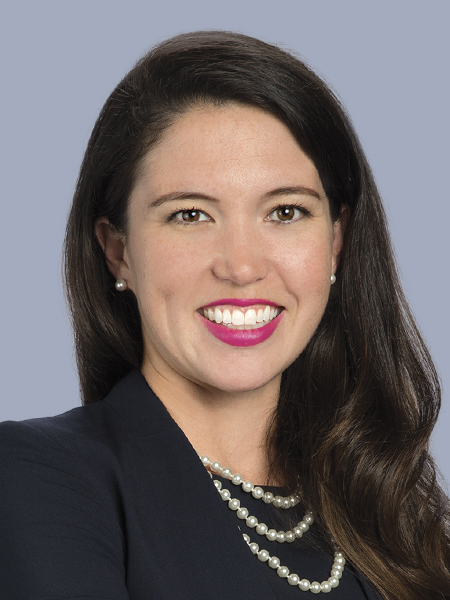A Simplified Clinical Protocol for the Fabrication of Full-Arch Implant Restorations (1 CEU)

Recently, Dr. Taylor Manalili spearheaded efforts in Glidewell’s Clinical R&D department to streamline the clinical steps for full-arch implant restorations. Here, she details how the new, simplified workflow will produce more predictable results while saving doctors valuable chair time. Dr. Manalili also discusses how the lab has produced and made available step-by-step videos, instructions, checklists and other resources to help clinicians throughout the process.
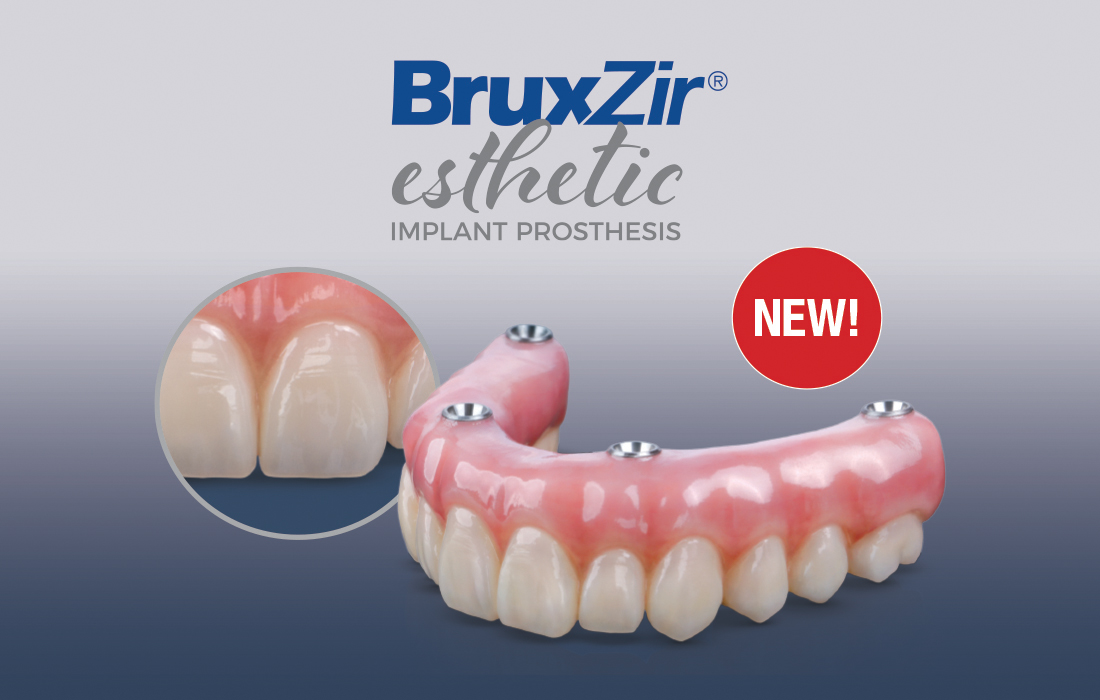
The new BruxZir Esthetic Implant Prosthesis was launched in tandem with Glidewell’s streamlined step-by-step protocol for full-arch zirconia implant restorations. This new esthetic formulation offers optimized translucency and exceptional gingival and tooth anatomy — without the risk of fracturing the layered porcelain used in most premium full-arch restorations.
CHAIRSIDE® MAGAZINE: We know you’ve been working extensively with the BruxZir® Implant Prosthesis since you joined Glidewell. Before we dive into the new and improved protocol you’ve developed with the Clinical R&D team, can you share your thoughts on the restoration itself? What distinguishes this implant solution from the other options out there?
DR. TAYLOR MANALILI: As a prosthodontist working with acrylic hybrids and layered full-arch restorations, I would worry about the denture teeth dislodging or the material wearing down or fracturing. The strength and monolithic construction of the BruxZir Implant Prosthesis avoid all of that, so it’s been a major step forward in providing edentulous patients with a fixed restoration that will last. Dental zirconia also isn’t nearly as porous as the materials in hybrid restorations, so biofilm buildup and the resulting odors are prevented. Also, we now have a new formulation fabricated from BruxZir Esthetic Zirconia, and I think that when you combine the durability of monolithic restorations with the beauty and lifelike translucency of anterior-grade zirconia, it really changes the game.
CM: As a key part of your work here as director of prosthodontics in the Clinical R&D department, you’ve been focusing on improving the restorative protocol for this type of implant restoration. How did this initiative come about?
TM: It came about because restoring full-arch implant cases can be challenging. There’s a lot to take into consideration when fabricating this kind of restoration, and we really wanted to simplify things for clinicians. The position of the teeth within the restorative space is a vital determinant for the success of these full-arch cases. There are also some other important aspects that must be addressed, like achieving a precise full-arch impression, an accurate bite relationship, and a level restorative platform, so we want to give dentists the tools and clinical resources they need to accomplish all of that. Our goal was to put in place a simplified, easy-to-follow procedure to help clinicians produce a predictable outcome, using as little chair time as possible.
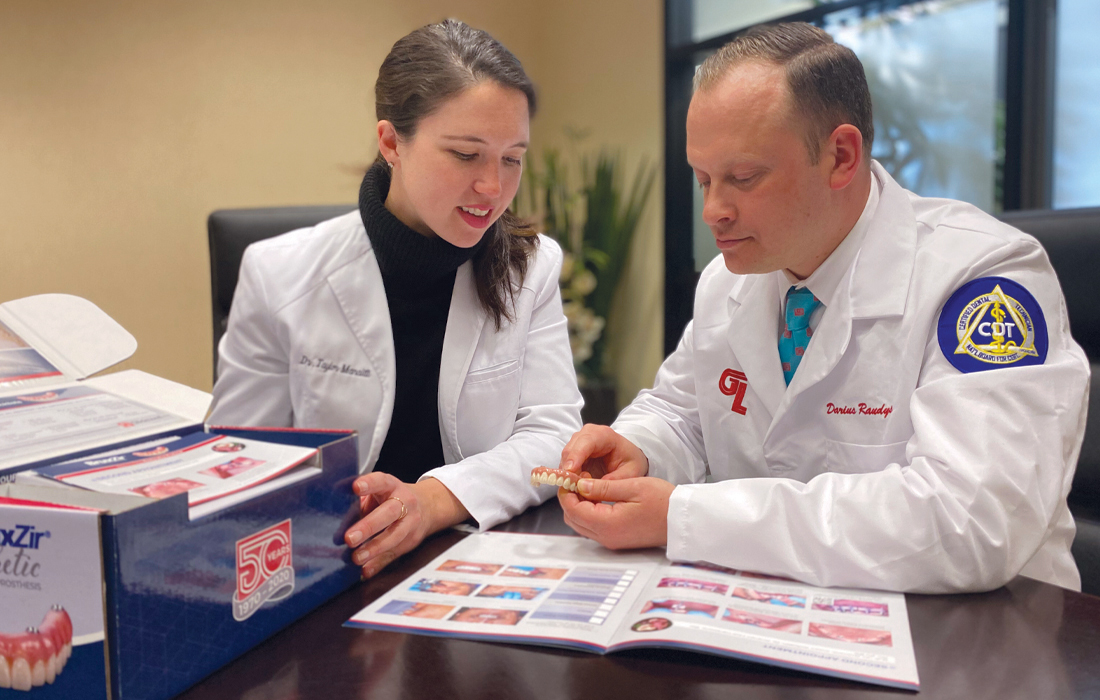
In 2019, Dr. Taylor Manalili began leading Glidewell’s initiative to streamline the step-by-step protocol for the BruxZir Implant Prosthesis, with the goal of producing optimal restorative outcomes and saving clinicians valuable chair time. Here, she discusses prosthesis design and fabrication with Darius Raudys, CDT, general manager of the Implant department at Glidewell.
CM: So what was the restorative protocol for this implant restoration before you began revising the process? Was it similar to what other labs do with screw-retained hybrid dentures?
TM: It was similar, although ours has always included a CAD/CAM provisional implant prosthesis, which continues to be one of the most valuable clinical tools for ensuring an accurate final restoration. What we’ve done is put some steps in place that help determine where the teeth should go from the very beginning. We have found that by investing a little more time at the start, you can save a lot of time later in the process.
Our goal was to put in place a simplified, easy-to-follow procedure to help clinicians produce a predictable outcome, using as little chair time as possible.
CM: What are the most important changes clinicians can expect?
TM: Understanding where to place the teeth from the outset, and communicating that information to the lab, makes a huge difference, both esthetically and functionally. One key step in our new process is to have the dentist create a duplicate of the patient’s existing denture at the preliminary impression appointment, which helps the technician understand where to position the teeth, the midline and the incisal edges. This also helps us select the appropriate multi-unit abutments earlier on, which creates a level, equigingival restorative platform. This in turn allows for a smooth and efficient protocol at subsequent appointments. You don’t need to anesthetize the patient, you can correct implant angulation, and you don’t have to worry about tissue being in the way as you seat the wax rim, setup, provisional and final prosthesis.
We now provide the custom tray and implant verification jig (IVJ) at the same appointment as the multi-unit abutments and wax rim. Previously, multi-unit abutments were selected after the wax rim appointment, which was creating issues with the bite in some cases. We’re seeing that the new process produces more accurate records and results in fewer try-ins.
CM: How did you go about revising the protocol?
TM: We developed and validated our new process in our clinical operatory, working with feedback we received from clinicians and our team in the Full-Arch Implant department. As we’ve refined the process, each case has gotten smoother, and we’re seeing better results in the full-arch BruxZir restorations we’ve produced for doctors since the new protocol was implemented a few months back.
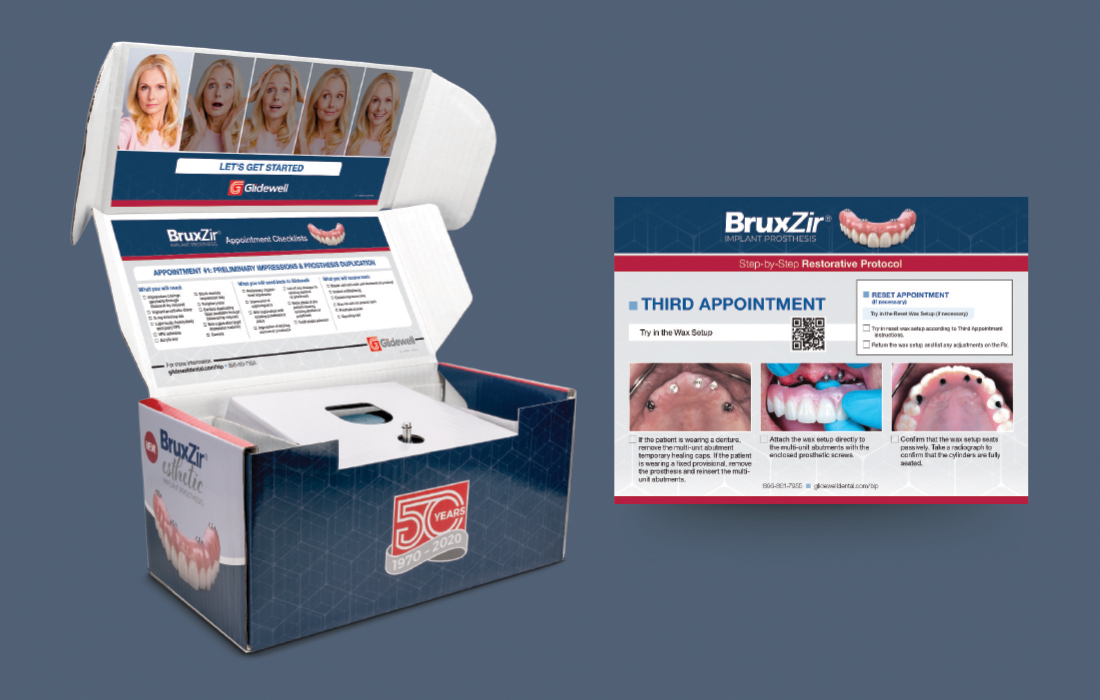
Based on clinical research spearheaded by Dr. Manalili, BruxZir Implant Prosthesis cases are now packaged in new boxes that include appointment-specific guides and checklists that help ensure a smooth, predictable restorative process.
CM: What is Glidewell doing to familiarize clinicians with the new and improved process?
TM: This has been one of our biggest areas of focus — giving dentists the clinical resources they need to achieve the best result possible. First, we created new shipping boxes, which include step-by-step guides as well as checklists of the items clinicians will need, receive and send back for each appointment. We’re also including checklists that help with evaluating the wax rim and try-in. This will help with the operatory setup for each appointment and knowing exactly what to expect.
Additionally, we’ve made tutorial videos available online for the most important parts of the restorative process. This includes tips and tricks for taking your bite registration, seating multi-unit abutments, and other essential procedures. Also, our technical advisor team is extremely knowledgeable and has been specially trained to assist with the clinical workflow and answer any questions dentists might have along the way.
CM: The protocol includes a step for prescribing a bite splint if desired by the clinician. Do you typically prescribe bite splints for these types of cases?
TM: Yes, I typically prescribe a CLEARsplint® (hard) or a Comfort H/S™ Bite Splint (hard/soft) in these cases. Full-arch implant patients have a lack of proprioception. If the patient has a history of parafunctional habits, this is cause for concern. Also, the bite splint will help reduce muscle activity, helping to protect the new prosthesis as well as the opposing dentition. While a guard can be provided for either arch, I tend to prescribe it for the arch with the restoration so I can have it fabricated and delivered with the definitive prosthesis at the same appointment, which is why we suggest prescribing one when you return the case prior to the final delivery appointment.
CM: Where can dentists learn more about this new and improved protocol?
TM: Everything I’ve discussed here is available at glidewelldental.com/bip, and our step-by-step guides include QR codes that lead directly to tutorial videos relevant to each appointment. I think dentists are going to have a great experience with the new process, and we certainly welcome feedback.
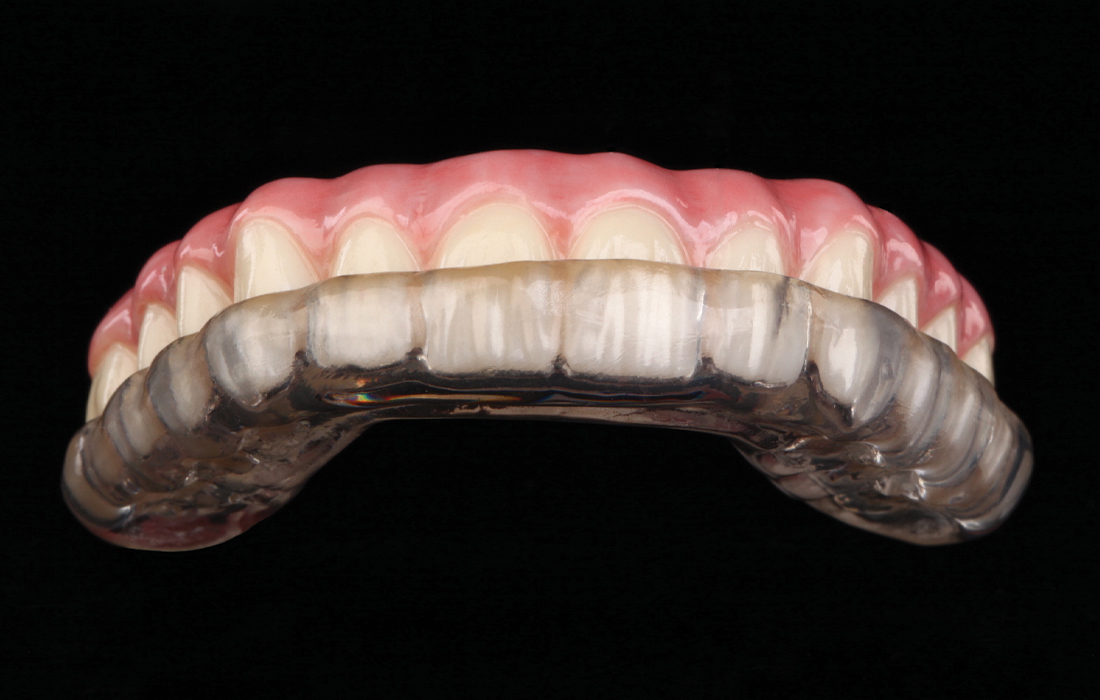
Dr. Manalili recommends providing a CLEARsplint or Comfort H/S Bite Splint for the arch being restored, especially for patients with parafunctional habits. Following the BruxZir Implant Prosthesis protocol, the bite splint is prescribed just prior to the final delivery appointment.
"I had never done a fixed full-arch implant restoration before my first BruxZir Implant Prosthesis case. I can’t say enough about how helpful and informative the lab was throughout the process. Everything was very straightforward, and each step went smoothly because I always knew exactly what I needed to accomplish clinically. The protocol Glidewell has developed helped simplify a complicated case and made it easy to get predictable results. There was nothing we had to do twice thanks to the instructions and help I received from the lab. Most importantly, the patient was extremely happy with the net result."
– Rafael Cardenas, DMD
East Providence, Rhode Island
Overview of the New Restorative Protocol
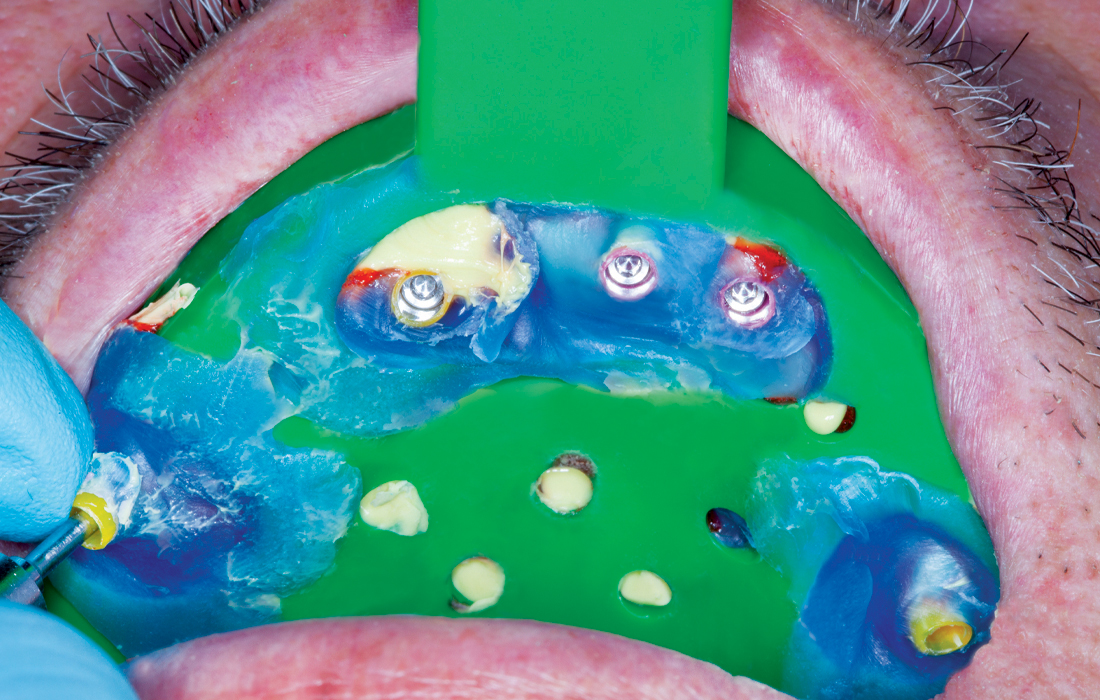
Appointment 1: Take preliminary impressions and duplicate the patient’s existing denture.
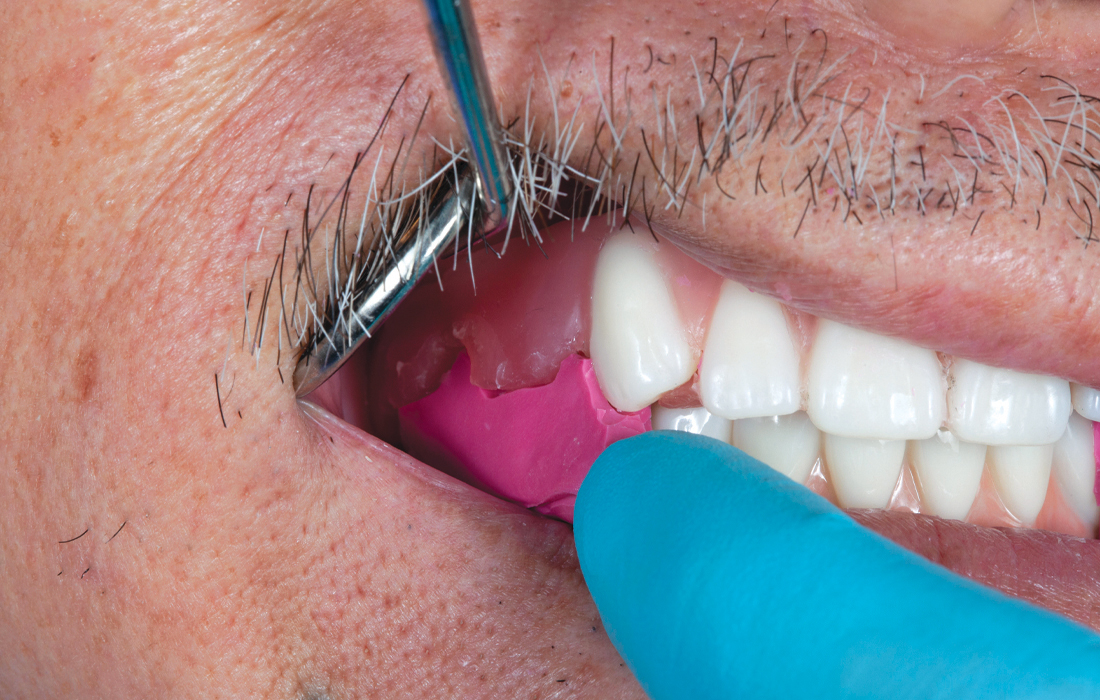
Appointment 2: Seat multi-unit abutments, take final abutment-level impression, evaluate and adjust wax rim, and take bite registration.
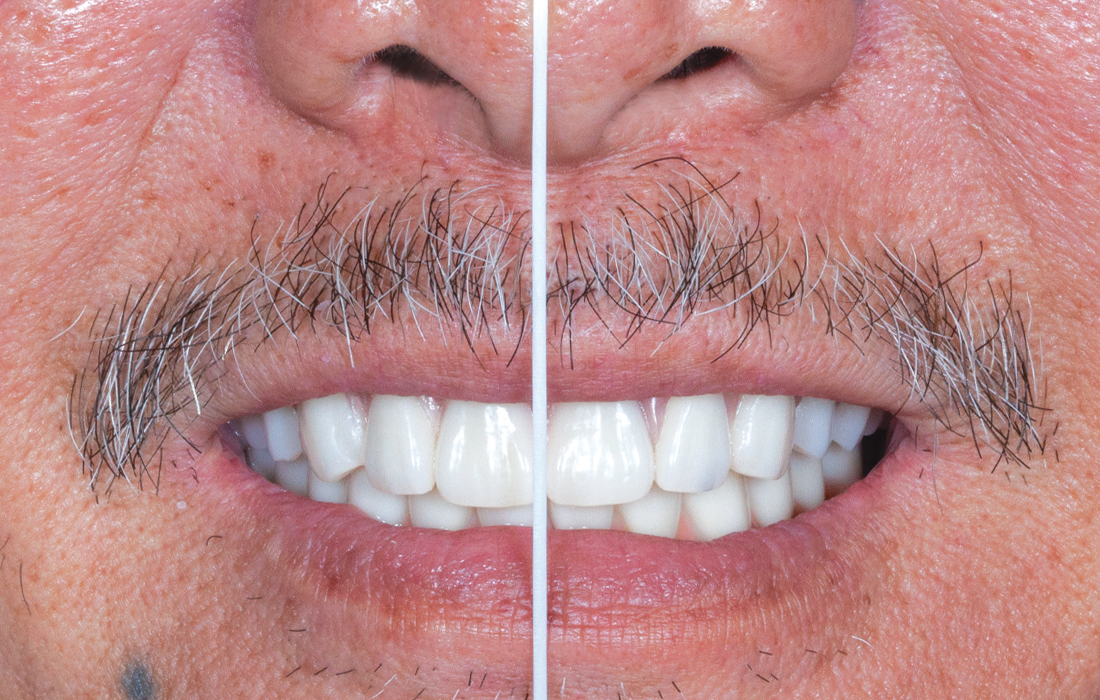
Appointment 3: Try in and verify the wax setup.
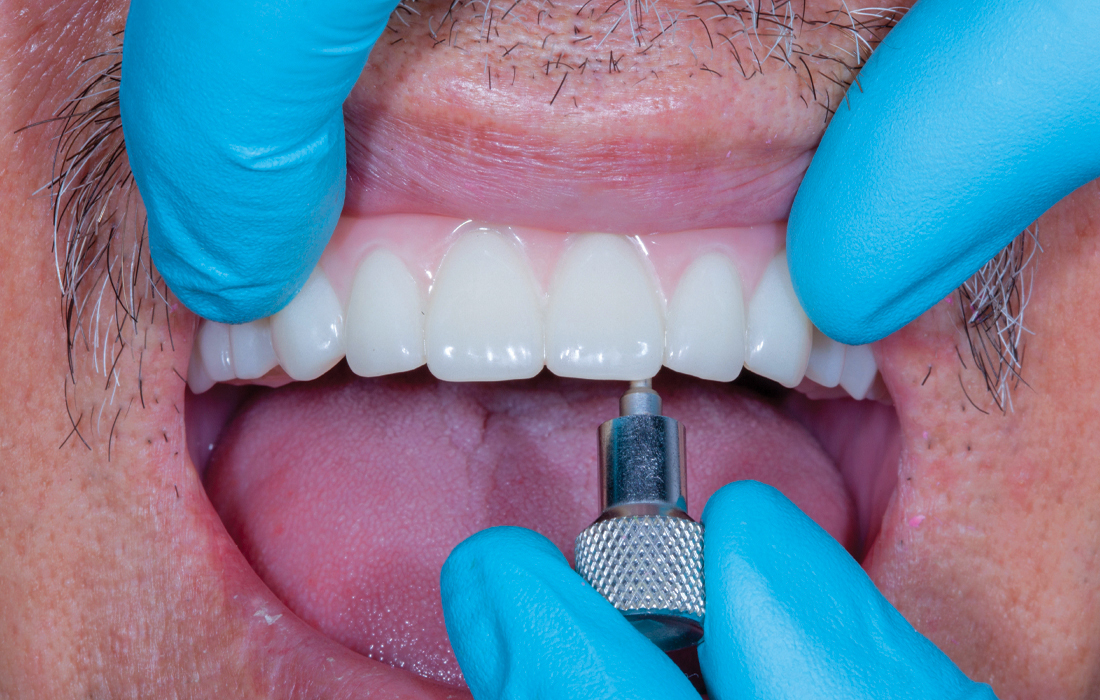
Appointment 4: Seat and confirm the provisional implant prosthesis (patient wears provisional for 2–4 weeks).
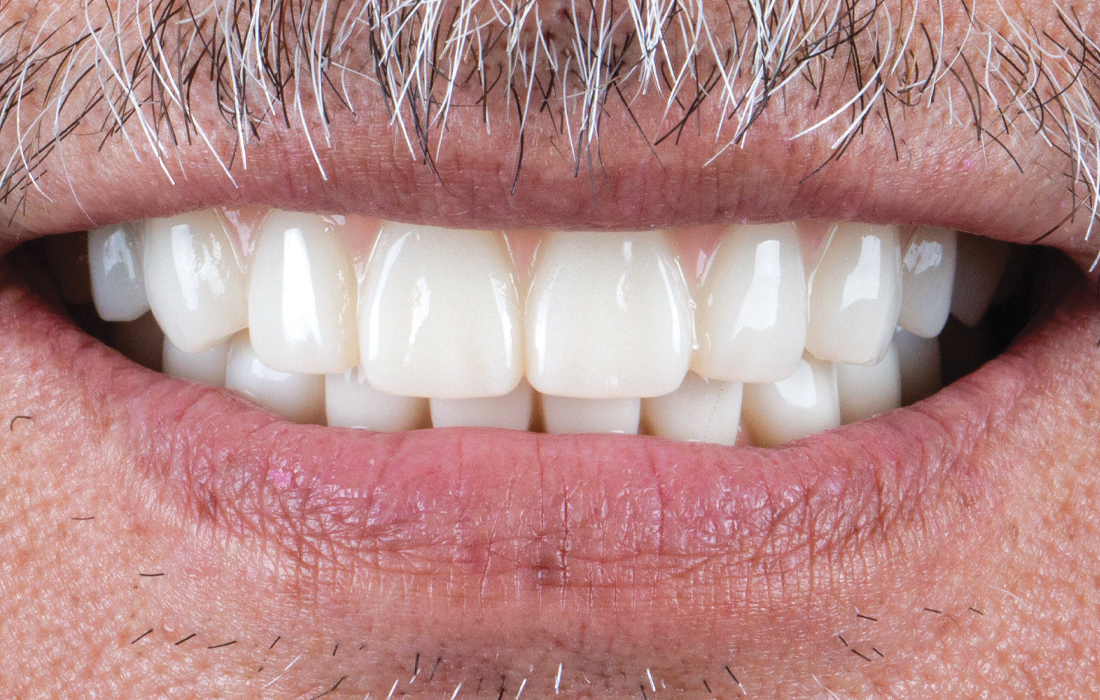
Appointment 5: Deliver BruxZir Implant Prosthesis.
CLEARsplint is a registered trademark of Astron Dental Corporation.


